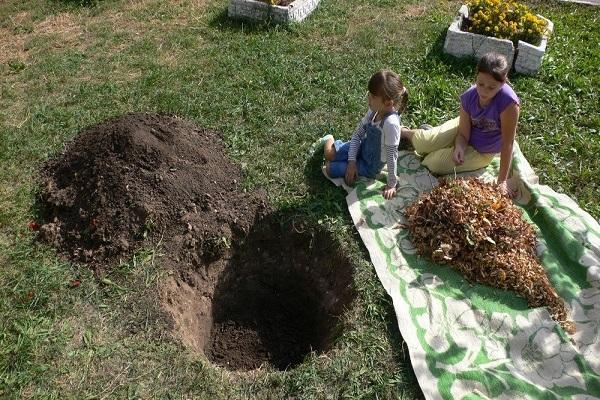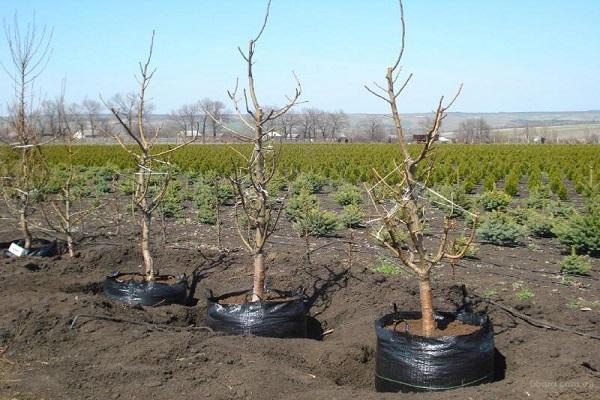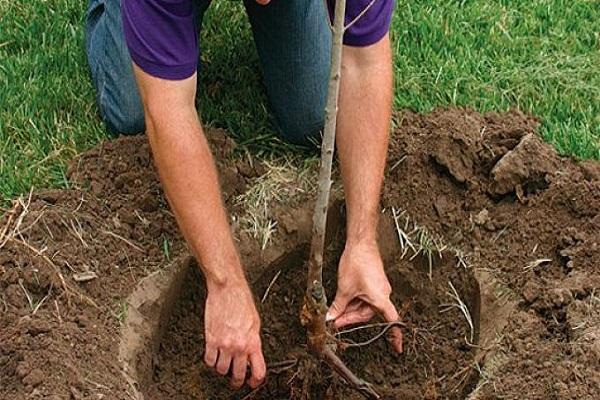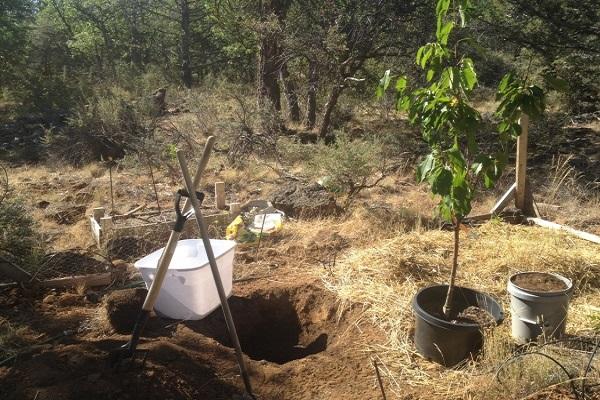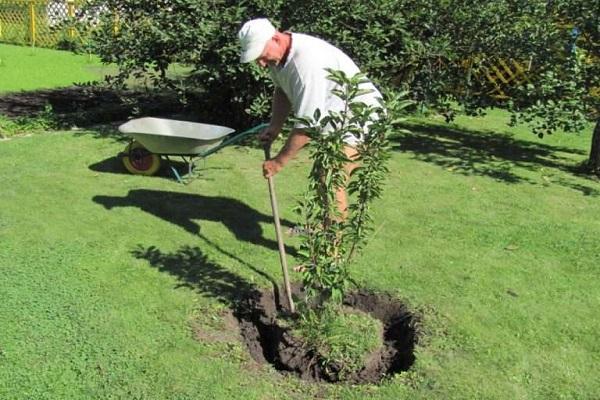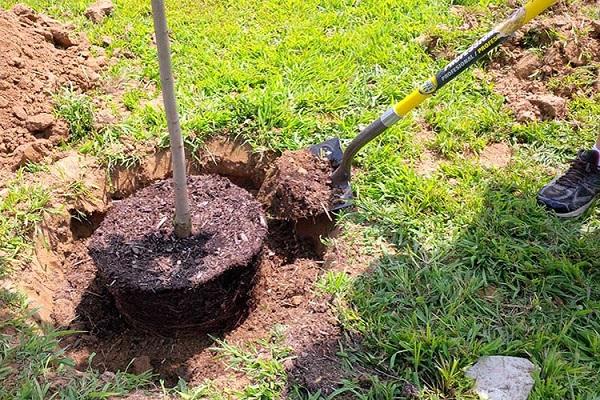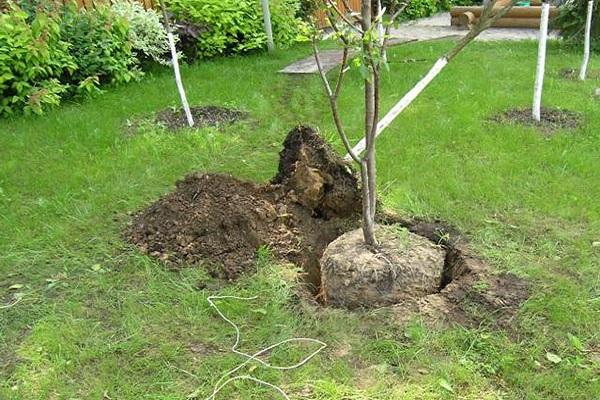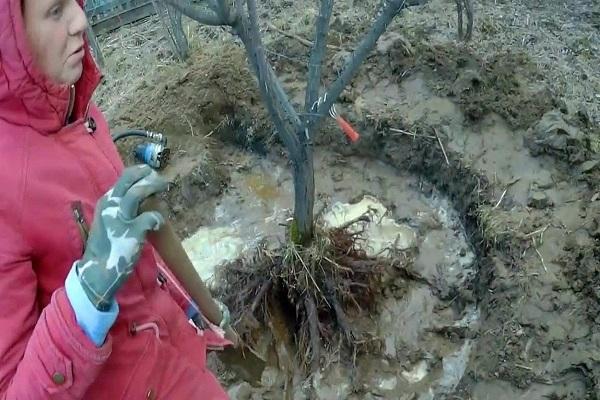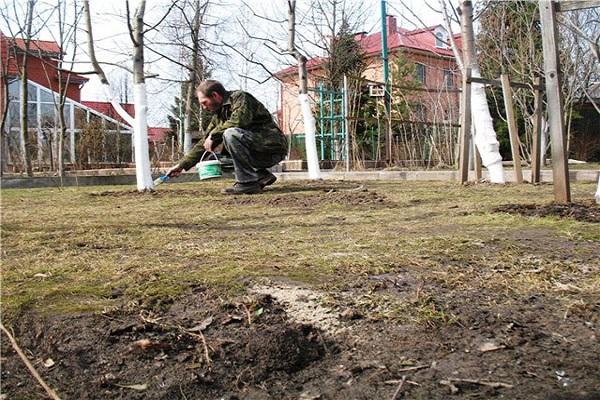Replanting a tree is a very labor-intensive process; if done incorrectly, it can either damage or destroy the cherry tree. If the plant is immediately planted in the right place, replanting can be avoided. But there are situations when a gardener is forced to move a berry crop from one place to another. Therefore, the following questions arise: how to properly transplant cherries to another place, at what age the plant will successfully undergo transplantation, and what period is more acceptable for this event.
- In what cases is cherry replanting necessary?
- At what period can it be replanted?
- Spring
- Summer
- Autumn
- When is the best time to replant?
- Preparing the site and planting hole
- Technology for transplanting cherries of different varieties and ages
- Replanting seedlings
- How to replant a mature tree
- Replanting a coppice tree
- Self-sterile cherry
- Caring for the plant after planting in a new place
- Common Mistakes
- Tips and tricks for a successful transplant
In what cases is cherry replanting necessary?
The need to transplant cherries in adulthood may arise for the following reasons:
- Construction of new buildings.
- Changing the design of the garden plot.
- Thinning of widely overgrown plantings.
- Soil not suitable for growing berries.
There are many more reasons that encourage a gardener to take on this difficult task.
Any tree transplantation, even during fruit-bearing age, can disrupt the natural course of physiological processes. Therefore, it is important to become familiar with effective agricultural techniques that will help improve survival rate, restore shoot growth, and minimize the break in fruiting.
The age of the cherry tree that needs to be transplanted to another place should not exceed 5-6 years. Healthy plants that do not have a damaged trunk are subject to replanting..
At what period can it be replanted?
The transplant may fail. The reason is that mature trees react negatively to damage to branches and roots and have difficulty growing back. Knowing when to replant, you can minimize the risks.
Spring
Spring is considered a favorable period for replanting adult plants. An important condition is that this must be done as early as possible, before the start of the growing season. Since there will be enough time to strengthen the root system of the cherry in the ground. Over the summer months, the tree will have time to adapt, get used to new conditions and get stronger.
Summer
Summer is not the best time to carry out transplantation work.During this period, it is permissible to replant young specimens. A tree can only be replanted by transshipment, otherwise the result is not guaranteed.
Important! The transplantation process should be carried out in cloudy, rainy weather.
Autumn
In autumn, replanting can be done from mid-October to November, depending on the weather. If it is warm and humid, replant later, the main thing is that the tree has time to prepare for winter. It is important to do this before frost sets in and the top layer of soil freezes.
When is the best time to replant?
Replanting needs special attention, because the cherry tree is stressed and may die, so it is better to do it in spring or autumn. Transplantations at these times of the year show good results.
Preparing the site and planting hole
Cherry is demanding on the soil composition, so when choosing a location, give preference to illuminated, elevated areas, protected from strong winds. The soil should be characterized by looseness, moisture impermeability, and fertility. The type is predominantly medium loamy, sandy loam.
The size of the planting hole depends on the age. If the plant is 5-6 years old, then the hole should have a depth of 0.5 meters, since its root will be 1-2 m deep. If the cherry tree is older, a depth of 0.8 m will be sufficient. Before planting, equip the bottom of the pit with a soil mixture containing the top layer of soil and humus.
Technology for transplanting cherries of different varieties and ages
There are two types of replanting cherries: when the roots are open and if they are hidden in the ground. In the second case, the crop is replanted with a lump of soil. This is an ideal solution, since the root system remains in its accustomed environment, is not disturbed and will be firmly connected to each other by a piece of earth.
Replanting seedlings
Only healthy seedlings are subject to replanting. To do this, make a moat around the cherry tree within six months. Carefully trim and clean the roots, then coat them with garden varnish. Fill the ditch with humus. During the summer period, water the seedling.
By autumn, superficial roots will grow, this will allow the plant to take root in a new place. Replant in the fall, when the leaves fall, a month before the onset of frost, into a prepared hole, compacting the top layer of soil so that the roots adhere to the ground as much as possible.
How to replant a mature tree
When transplanting adult crops, take into account the age of the migrant. It is better to replant a three-year-old cherry tree as soon as spring comes, and always with a clod of earth. During the planting process, take into account that the root collar should be at ground level when settling. The survival rate of cherries that are more than 4 years old will increase significantly if the transplant is performed as follows:
- In the fall, dig a shovel-width trench near a tree, at least 70 cm deep.
- Trim the roots, and pour a mixture into the trench, the composition of which should include a nutrient substrate, humus, and peat. The cut roots will grow back within a year, and small fibrous roots will form on them, which will later help the plant to take root.
- In the spring, a year later, dig up soil from the outside of the trench, trying to save all the small roots. Then, taking a shovel, cut off the lower roots and carefully remove the tree along with the lump of earth.
- Place in the prepared hole and sprinkle with soil mixture.
- Water and, to reduce moisture evaporation, wrap the trunks at the base of the skeletal branches with moss or burlap and moisten them with water from time to time.
- To prevent trees from swaying under gusts of wind, secure them in the ground with reliable guy ropes.
- Mulch the circle around the trunk using humus and sawdust.
With proper care, plant adaptation lasts 2 years, and in the 3rd year they will begin to delight with a full harvest.
Replanting a coppice tree
In order to correctly transplant a coppice tree and get a beautiful, flowering plant and a high-quality harvest, you must adhere to the following procedure:
- Carefully dig up the tree and try to keep a lump of soil on the roots.
- Inspect the roots, freeing them from damaged parts. If the transition zone from the stem to the root is dry, then soak it in water for 2-3 hours.
- Place the cherry in the center of the recess, with the root collar placed 3 cm above the ground surface. Sprinkle nutrient substrate on top.
- Place a stake near the tree and secure the plant to prevent it from falling over.
- Water generously and mulch. This technique will retain moisture for the plant and protect the roots from severe frosts.
By performing all the manipulations correctly, next season you can get a healthy tree whose roots will develop normally.
Self-sterile cherry
For certain crop varieties, pollen from trees of a different variety is required for successful pollination. Therefore, when changing the location of the cherry tree, you should make sure that pollinating plants grow nearby. The ideal distance at which cross-pollination occurs is no more than 50 m.
Caring for the plant after planting in a new place
The decisive factor in the successful survival of transplanted cherries is considered to be proper care for them after transplantation:
- To prevent the cherries from losing moisture and nutrients, when planting, shorten the main branches by 1/3.Treat wounds using garden varnish and drying oil.
- Constantly inspect plants for signs of diseases and pests, and if problems are detected, promptly take appropriate measures to combat them.
- Organize high-quality watering to maximize the development of new surface roots instead of cut ones.
- Mulch the soil near the tree using peat and humus, this will retain soil moisture.
- In the year of transplantation, if the cherry tree has bloomed, you need to remove the flowers so that fruiting does not additionally burden the still fragile plant.
Transplanted cherries will require more attention during their first growing season than other trees.
Common Mistakes
Common mistakes made during the transplant process include:
- low or high location of the root collar;
- failure to comply with the correct planting scheme;
- not preparing the pit for planting, neglecting to apply fertilizers;
- lack of support and garter.
Transplanting mature trees is a troublesome and responsible task, so it is important to arm yourself with the necessary knowledge and not rush.
Tips and tricks for a successful transplant
Before you start transplanting mature cherries to another place, you need to listen to the advice of knowledgeable gardeners:
- replant varieties that are more likely to get used to a new place;
- keep the main roots and their branches intact if possible;
- when transplanting, maintain its orientation relative to the cardinal directions, which will relieve sun burns and bark injuries;
- protect the roots and bark of branches from drying out;
- increase the chance of survival by pruning branches to restore balance between the root system and crown;
- provide the transplanted tree with high-quality soil mixture and care.
Taking into account all the nuances, you can successfully transplant a cherry tree yourself without the involvement of professionals.
Transplanting mature cherries from one place to another is a very risky operation. The older the tree, the greater the risk of losing it. If you arm yourself with knowledge and perform all the necessary agricultural techniques, the likelihood of a favorable outcome will increase significantly.

